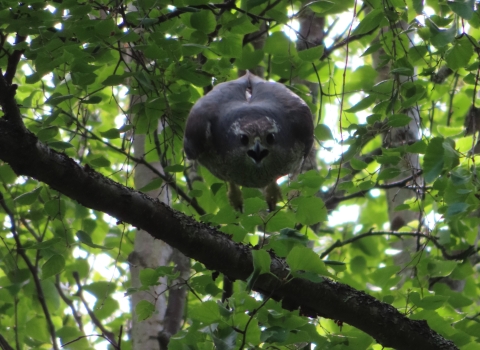As wetlands go, this one in a non-descript corner of Henderson County, NC isn’t large. But it does persist in the French Broad River valley of Western North Carolina, once rich in wetlands but where most have long ago been drained, filled, plowed under, built-upon, and otherwise rendered unrecognizable and non-functional. So, when word got out that it had become infested in an invasive European alder, which threatened native plants and could eventually alter the flow and distribution of water through the site, an effort was set in motion that would bring nearly twenty people from multiple organizations out for a workday to begin to get the invasive tree under control via a simple strategy of cutting and hyper-focused use of herbicides – as a stand-alone treatment, and a supplement to cutting in order to prevent stumps from resprouting.
Then Hurricane Helene struck Western North Carolina.
Attention immediately pivoted from cutting invasive trees to cutting trees to clear roads and houses, and day after day the focus was on hauling water to flush toilets, checking on family and neighbors, and wondering when gasoline would be available.
As the dust settled, power returned for many and water – some drinkable, some not – began to flow through pipes. Some returned their thoughts to the European alders and also how the wetland fared during the hurricane. Fall is the best time to treat the invasive trees with herbicide because they would pull it deeper into their tissue as they shut down for winter. Each passing day meant the window was closing and increased the likelihood of the trees persisting through spring, when herbicide isn’t as effective and can get pushed out by high sap flow through the tree’s tissues.
Asheville Field Office biologists Jay Mays, Sue Cameron, and Gary Peeples were joined by Service interns Madison Polera and Ansley Williamson for an October workday that improved the health of the wetland and also brought together members of a team separated by the demands of Hurricane Helene’s aftermath. The hurricane had brought down a pair of oaks on the periphery of the wetland, but otherwise there was no sign a massive storm had come through. By the time the team finished, an impressively sized area had been cleared of the alder, where now only sprouts would have to be controlled until the seed bank exhausted itself.












